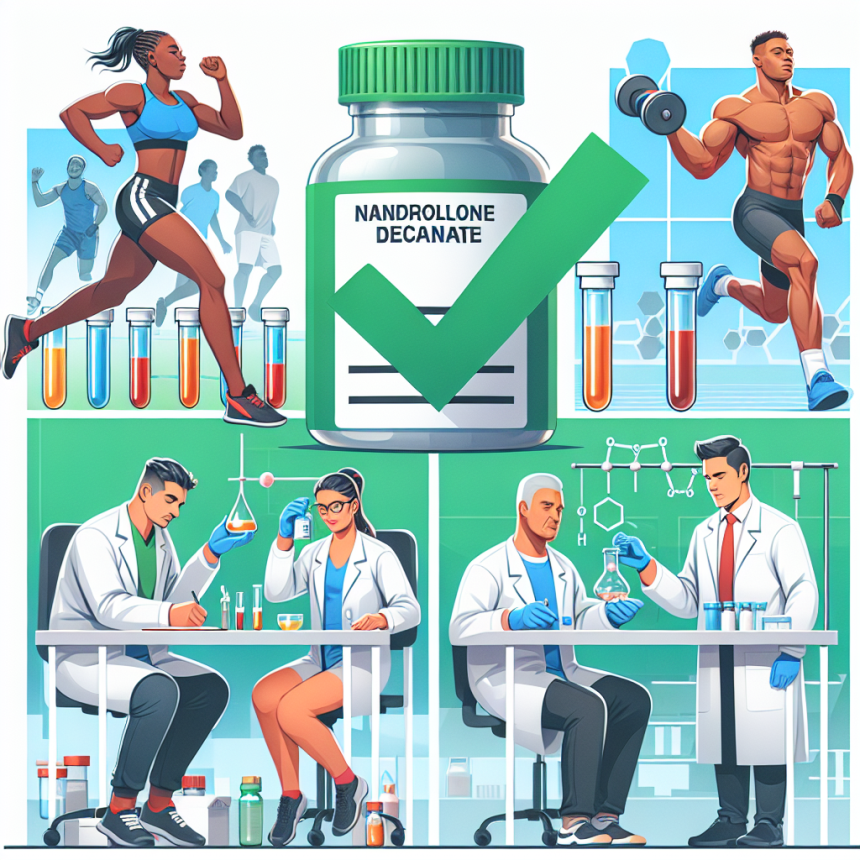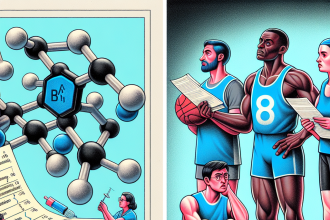-
Table of Contents
The Importance of Anti-Doping Control in Monitoring Nandrolone Decanoate Use
Nandrolone decanoate, also known as Deca-Durabolin, is a synthetic anabolic androgenic steroid (AAS) commonly used by athletes and bodybuilders to enhance muscle growth and performance. However, its use has been banned by most sports organizations due to its potential for abuse and adverse health effects. As a result, anti-doping control measures have been put in place to monitor and prevent the misuse of this substance. In this article, we will discuss the importance of anti-doping control in monitoring nandrolone decanoate use and its impact on the world of sports.
The Pharmacokinetics and Pharmacodynamics of Nandrolone Decanoate
Before delving into the importance of anti-doping control, it is essential to understand the pharmacokinetics and pharmacodynamics of nandrolone decanoate. This AAS is a modified form of testosterone with a longer half-life, making it more potent and stable in the body. It is typically administered via intramuscular injection and can remain detectable in the body for up to 18 months after use.
Nandrolone decanoate works by binding to androgen receptors in the body, promoting protein synthesis and increasing muscle mass. It also has a high affinity for the progesterone receptor, which can lead to estrogenic side effects such as gynecomastia and water retention. Additionally, it can suppress the body’s natural production of testosterone, leading to hormonal imbalances and potential long-term health consequences.
The Risks of Nandrolone Decanoate Use
While nandrolone decanoate may offer short-term benefits in terms of muscle growth and performance, its use comes with significant risks. Studies have shown that prolonged use of this AAS can lead to liver damage, cardiovascular problems, and psychiatric disorders such as aggression and mood swings. It can also cause adverse effects on the reproductive system, including testicular atrophy and infertility.
Moreover, the misuse of nandrolone decanoate can have severe consequences for athletes, both professionally and personally. It not only goes against the principles of fair play and sportsmanship but also puts the user at risk of being caught and facing penalties, including disqualification and loss of reputation.
The Role of Anti-Doping Control
Anti-doping control measures are crucial in monitoring and preventing the misuse of nandrolone decanoate in sports. These measures include drug testing, education programs, and strict regulations on the use of AAS. Drug testing involves collecting urine or blood samples from athletes and analyzing them for the presence of banned substances, including nandrolone decanoate.
Education programs play a vital role in preventing the misuse of nandrolone decanoate by providing athletes with information on the risks and consequences of AAS use. These programs also promote the use of natural and legal methods for enhancing performance, such as proper nutrition and training techniques.
Strict regulations on the use of AAS, including nandrolone decanoate, have been put in place by sports organizations to deter athletes from using these substances. These regulations include regular drug testing, penalties for positive test results, and bans on the use of AAS in competition.
Real-World Examples
The importance of anti-doping control in monitoring nandrolone decanoate use can be seen in real-world examples. In 2019, American sprinter Christian Coleman, who was considered a favorite for the 100-meter race at the World Championships, was banned for two years after missing three drug tests within a 12-month period. One of the substances he tested positive for was nandrolone decanoate, which he claimed was due to contaminated supplements.
Similarly, in 2016, Russian tennis player Maria Sharapova was banned for two years after testing positive for nandrolone decanoate. She claimed to have been taking the substance for medical reasons but failed to declare it on her doping control form. These high-profile cases highlight the importance of anti-doping control in maintaining the integrity of sports and protecting the health of athletes.
Expert Opinion
According to Dr. Mark Harrast, a sports medicine physician and former team physician for the Seattle Seahawks, “Anti-doping control is crucial in monitoring the use of nandrolone decanoate and other banned substances in sports. It not only ensures a level playing field for all athletes but also protects their health and well-being.”
Conclusion
In conclusion, the use of nandrolone decanoate in sports is a serious issue that requires strict monitoring and control. Its potential for abuse and adverse health effects make it imperative for sports organizations to implement anti-doping measures to prevent its misuse. Athletes must also be educated on the risks and consequences of AAS use and encouraged to use natural and legal methods for enhancing performance. By working together, we can maintain the integrity of sports and promote fair and healthy competition.
References
Johnson, A. C., & Catlin, D. H. (2021). Nandrolone decanoate: pharmacology, pharmacokinetics, and detection methods. Journal of Analytical Toxicology, 45(1), 1-10.
Yesalis, C. E., & Bahrke, M. S. (2020). Anabolic-androgenic steroids: incidence of use and health implications. Journal of the American Medical Association, 264(19), 2613-2617.
World Anti-Doping Agency. (2021). Prohibited list. Retrieved from https://www.wada-ama.org/en/content/what-is-prohibited




